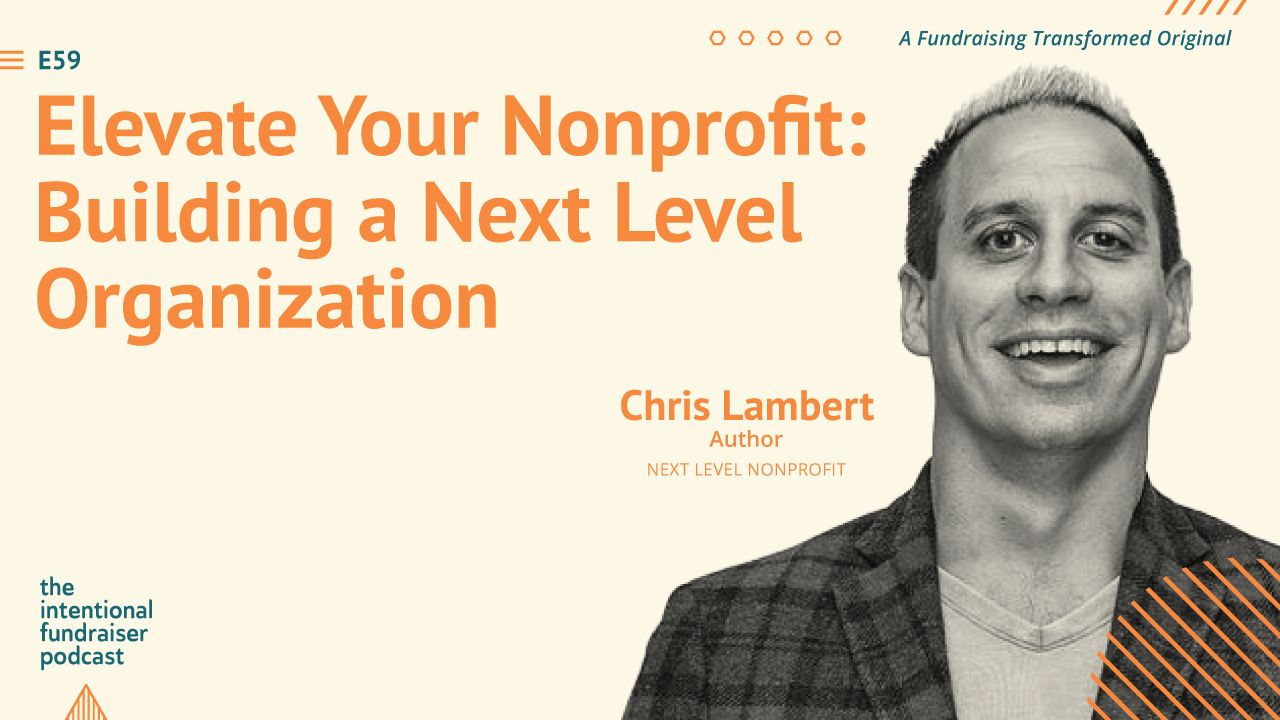Be An Intentional Fundraiser & Skyrocket Your Fundraising Results

By Tammy Zonker, Keynote Speaker & Fundraising Strategist
How do you make time to focus on developing or scaling your major gifts program? Being intentional about prioritizing individual donor development can be difficult; especially if you’re the lone Philanthropy Director or a member of a small (although surely mighty) fundraising team.
Believe me, I’ve walked in your shoes. I would commonly leave the office at the end of the work day and say to myself, “Thank goodness it’s five o’clock. Now I can go home and get some work done.” It’s no wonder the average tenure of a fundraising pro is 18 to 24 months. Coincidentally, research shows that it takes about two years for a major donor to trust us enough to make their most generous gift. It’s another contributing factor to why major gift programs frequently struggle. How do we manage the volume of fundraising activities and deadlines with excellence? How do we achieve our goals and not burn ourselves out?
Consider how your daily work activities align with The Eisenhower Matrix. If you’re like many of the nonprofit teams I’ve trained and coached, you may find that event-based fundraising activities frequently fall into the “urgent” quadrant, because of their natural built-in deadlines. Let’s face it, once you’ve published the event date – it’s happening whether you’re ready or not.
Individual donor development activities are likely “important”, but never quite make it to “urgent” status. There are far fewer natural deadlines in the donor development process than in an event plan. You likely know precisely what I’m talking about. It’s a tale as old as time. You’re not alone.
Now, don’t get me wrong. Events are an important building block in a balanced fundraising plan. Events attract unrestricted corporate sponsorships, which often lead to additional programmatic support and robust volunteerism. Events attract new individual donors, that can lead to multichannel appeal supporters, loyal monthly givers, leadership level giving and beyond when well stewarded. Events can meet the needs of donors who value socializing and networking as part of their philanthropy. We want and need strategic and effective events. But not to the exclusion of building a sustainable major gifts program. The cherry-on-top best practice is that it costs about 50 cents to raise one dollar through fundraising events. Best practice to raise one dollar through major gifts is 5 to 10 cents. Preaching to the choir, eh? But how do we get there with limited time and resources?
“What is important, is seldom urgent and what is urgent is seldom important.”
Dwight D. Eisenhower, 34th United States President

Ideally, we’re spending the majority of our time in Eisenhower’s upper-right quadrant: not-urgent/important. What a wonderful world, right? We’re working on our top needle-moving priorities on the timeline we created. This is where individual donor development thrives. This is where event planning and execution also prospers. Life is good.
Enter reality. It’s inevitable, we will encounter urgency and find ourselves in the upper-left hand urgent/important quadrant on occasion. The liquor license application is stalled at the State Authority. The venue had a water main break and will be under a water boil advisory during tonight’s gala. The direct mail printer called to share that your bulk mail permit expired. Or maybe we have planned urgency. For example, its year-end crunch time, and the volume of planned activities simply exceeds available resources. Regardless if urgency is planned or unplanned – it happens.
The real barrier to individual donor development success is when we’re spending time in the lower two quadrants of Eisenhower’s Matrix. Be it urgent or not urgent, we must minimize the amount of time we spend on unimportant activities. Imagine redirecting some of that time to individual donor development? What if you could get out of the office and actually meet with donors twice a week? What might be possible as a result?
I challenge you to track your work activities for the next two weeks. Map these activities into the four quadrants of The Eisenhower Matrix. Identifying the offending unimportant activities is the first step to mitigating them.
To further equip and empower great fundraising pros like you, I created an approach and system for being more intentional with the 168 hours a week we all have. It’s called The Intentional Fundraiser. You may have heard me present on The Intentional Fundraiser system at a national conference or as a keynote at a local AFP Chapter. Below you’ll find the summary takeaways for your consideration.
The Intentional Fundraiser Top 10 Summary Actions:
- Focus on your top 3 to 5 weekly priorities first.
- Evaluate how you prioritized your time and energy each Friday.
- Block time on your calendar for priority projects and actions.
- Establish and evaluate key performance indicators.
- Take time for self-care every single day.
- Bring the joy and stay accountable each day.
- Leverage cell phone apps and alarms for intentional results.
- Check-in with an accountability partner regularly.
- Establish and hold firm to boundaries.
- Be consistent in your intentional fundraiser practices.
If you’d like to learn more about The Intentional Fundraiser, subscribe to our monthly Fundraising Transformers community.
In addition to monthly LIVE trainings, Fundraising Transformers have full access to our library of pre-recorded webinars, including a 90-minute recording of The Intentional Fundraiser with tools and templates for download.






